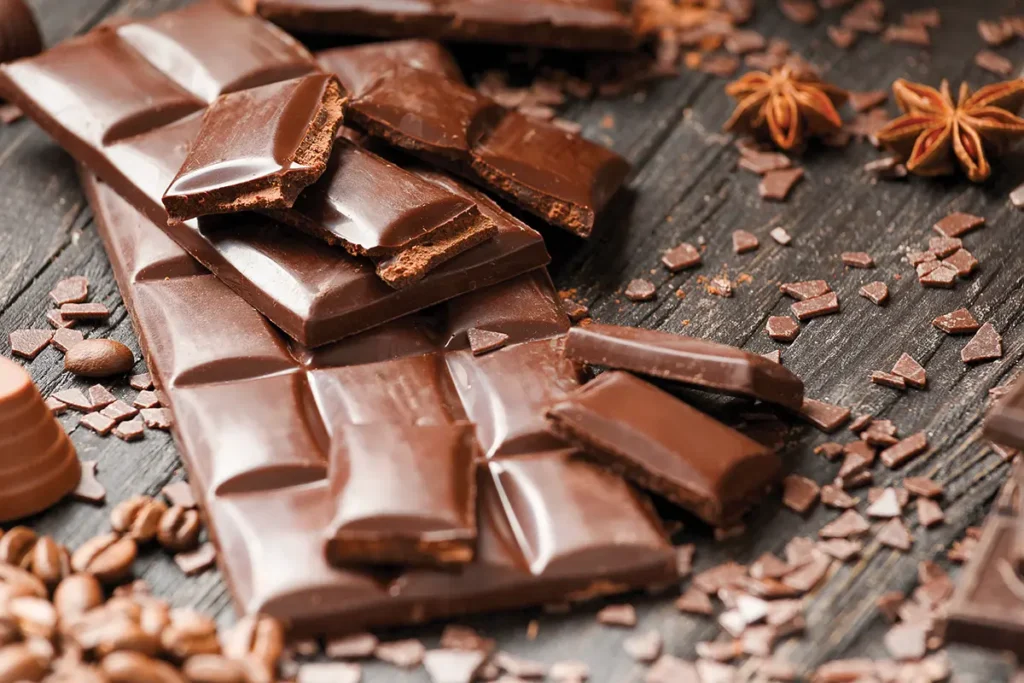Today’s Dietitian
Vol. 26 No. 8 P. 8
Q: Some of my clients are raising concerns about consuming chocolate due to heavy metal contamination. What’s the deal with heavy metals in chocolate, and is it safe to eat?
A: In 2022, Consumer Reports published the results of their investigation indicating that high levels of heavy metals were found in various popular brands of chocolates.1 This report was updated in 2023 and made media headlines on both occasions. The consequences of this report caused consumers to question the safety of eating chocolate, especially kids. However, there’s information that wasn’t properly covered in most media coverage. The following article will explain how heavy metals make their way into chocolate, whether consumers should be concerned about these metals in their candy bars, and how RDs can provide guidance to clients and their families.
How Metals Get Into Food
Lead and cadmium are two metals that can be found in chocolate. Cadmium is an element that’s already often found in the soil. In addition, some cadmium can be in the environment due to human activity like pollution from transportation, so it’s hard to avoid its presence completely in a natural environment. Smoking is also a major way to get cadmium, as cadmium oxide is released into the smoke when tobacco is burned. This frequent presence in the soil means that plants like cocoa trees are likely to absorb the elements in the soil where they grow and pass, which is then passed on to their fruit. According to Keith Ayoob, EdD, RDN, an associate professor of pediatrics at Albert Einstein College of Medicine and owner of Cut to the Chase Nutrition, “Cocoa trees are ‘bio-accumulators’ that absorb minerals from the soil, but so are many foods we consume in greater quantities and more regularly, like leafy greens, whole grains, and beans.” This means that chocolate isn’t the only food that absorbs various minerals from the soil—so do other foods consumed regularly.
Interestingly, plants like tobacco, rice, other grain cereals, and some veggies take up cadmium more avidly compared with the cacao plant. “Chocolate is the smallest dietary contributor and, even then, is grouped in with “sweets and sugars,” Ayoob explains, citing published research on kids and adults that used data from the National Health and Nutrition Examination Study.2 “This category, of which chocolate is only one portion, occupies <2% of our cadmium intake,” and the category ranked last in providing cadmium in the diet.
Understanding Consumer Report Research
Consumer Reports’ research tested 48 different chocolate products across seven categories, including cocoa powder, chocolate chips, milk chocolate bars, and mixes for chocolate cake and hot chocolate. To determine the risk of lead and cadmium from the consumption of one serving, researchers compared them with California’s maximum allowable dose levels (MADL) in food for lead (0.5 μg/day) and cadmium (4.1 μg/day).1 Sixteen of the 48 products tested were above Consumer Reports’ set level of concern for at least one heavy metal.
It should be noted that the FDA has set limits on the amount of lead and cadmium allowable in chocolate products, which are 0.1 ppm for lead, 0.3 ppm for cadmium in chocolate, and 0.5 ppm for cocoa powder. According to Ayoob, “Although the unit measurements are different, the risk of metal intoxication from chocolate is extremely low… California’s limit may have more to do with politics while the FDA limits are evidence-based, so I would trust the FDA.” Also notable is that in the over 30 years of Ayoob working with children with special needs—many who have had histories of lead toxicity—he reports never seeing a child who had lead toxicity (or cadmium toxicity) from food, including chocolate. Ultimately, foods are just not the primary source of lead toxicity—paint is.
Recommendations for RDs
Overall, the risk of metal intoxication in chocolate isn’t backed up by scientifically sound data. However, according to Ayoob, “Once you put ‘chocolate’ and ‘heavy metals’ in the same sentence with ‘kids,’ it’s an instant headline—without facts and context—and results in fearmongering.” Ayoob recommends the following guidelines to RD practitioners advising clients:
• As with all treats, keep chocolate for occasional consumption. Metals aren’t the concern, but you don’t want treats of any kind displacing more nutrient-dense foods.
• Make sure your children have enough calcium and iron sources in their diet, especially if the child doesn’t consume much dairy, beans, leafy veggies, and lean beef. The mineral content of these foods, especially calcium (eg, dairy foods) and iron (eg, legumes and leafy greens), also helps minimize risk of absorption of lead.
• Don’t hold back on fruits and vegetables! Their vitamin C content also aids in iron absorption.
— Toby Amidor, MS, RD, CDN, FAND, is the founder of Toby Amidor Nutrition (tobyamidornutrition.com) and a Wall Street Journal bestselling author. She’s written 10 cookbooks, including Up Your Veggies: Flexitarian Recipes for the Entire Family, Diabetes Create Your Plate Meal Prep Cookbook: 100 Delicious Plate Method Recipes, and The Family Immunity Cookbook: 101 Easy Recipes to Boost Health. She’s also a nutrition expert for FoodNetwork.com and a contributor to U.S. News and other national outlets.
References
1. Loria K. Lead and cadmium could be in your dark chocolate. Consumer Reports website. https://www.consumerreports.org/health/food-safety/lead-and-cadmium-in-dark-chocolate-a8480295550/. Updated October 25, 2023.
2. Spungen JH. Children’s exposures to lead and cadmium: FDA total diet study 2014. Food Addit Contam: Part A. 2019;36(6):893-903.



